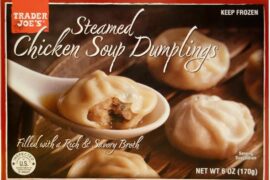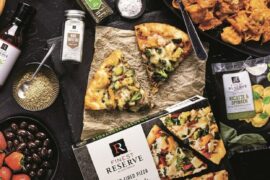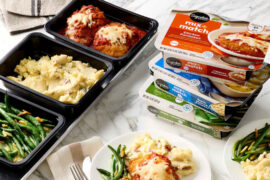As German discount retailers Aldi and Lidl continue to gain market share in the United Kingdom’s increasingly price competitive grocery market, the “Big Four” and other long-established operators are relentlessly feeling the heat. This is evident in results issued by the major multiples and companies such as frozen food specialist Iceland. Indeed, the Sainsbury supermarket chain and Iceland reported slippage in sales during the first quarter of 2015.
 For Flintshire, Wales-headquartered Iceland, like-for-like sales (not counting new stores) fell 4.4% for the year through the end of March, compared to the same period in 2014. Overall turnover (including receipts from new outlets), however, dipped only 0.5% to £2.67 billion.
For Flintshire, Wales-headquartered Iceland, like-for-like sales (not counting new stores) fell 4.4% for the year through the end of March, compared to the same period in 2014. Overall turnover (including receipts from new outlets), however, dipped only 0.5% to £2.67 billion.
Like-for-like-retail sales declined 2.1% (excluding fuel) for London, England-headquartered Sainsbury, which has a 16.5% share of the British grocery market compared with Iceland’s 2%. Total retail sales during the 12-week period through June 6 slipped 0.6%, which marked its sixth consecutive quarterly decrease.
 “This has been an exceptionally challenging year for the group, and for the UK food retailing industry as a whole,” says Iceland CEO Malcolm Walker.Iceland posted earnings of £150.2 million for the year to March 27, a decline of almost 26% from the £202.2 realized during the first quarter of 2014.
“This has been an exceptionally challenging year for the group, and for the UK food retailing industry as a whole,” says Iceland CEO Malcolm Walker.Iceland posted earnings of £150.2 million for the year to March 27, a decline of almost 26% from the £202.2 realized during the first quarter of 2014.
“This has been an exceptionally challenging year for the group, and for the UK food retailing industry as a whole,” said Malcolm Walker, chief executive officer. Nonetheless, he added: “In the face of food price deflation, intense competition and significant change in consumers’ shopping habits, Iceland has continued its long tradition of successful reinvention. We have done this by developing a new store format, launching new product ranges, upgrading packaging, rethinking marketing and initiating a major productivity program.”
The ceo believes that benefits began to become evident in a more encouraging underlying sales and profit performance towards the end of last year, which puts the company in a “stronger position to face the continuing competitive challenges in the year ahead.”
Iceland, which has been in business since 1970 and today employs approximately 24,000 people, ended 2014 with a net gain of 28 stores to give it a total of 872 units in the United Kingdom and Ireland. It aims to open 20 more outlets this year.
 Sainsbury Chief Comments
Sainsbury Chief Comments
Founded in 1869, Sainsbury today employs 161,000 people at 598 supermarkets and 714 convenience stores. It has recently opened 20 grocery Click & Collect sites, and is on track to have 100 on line by the end of this year.
“Trading conditions are still being impacted by strong levels of food deflation and a highly competitive pricing backdrop. These pressures, including the effect of our own targeted price investment, have led to a fall for the quarter,” said Mike Coupe, chief executive of the company.
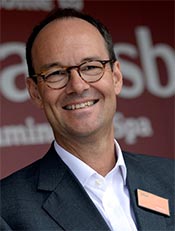 “Despite the challenging market conditions, we are confident that we are building on strong foundations and making good progress with our strategy,” says Mike Coupe, chief executive of Sainsbury.“Despite the challenging market conditions, we are confident that we are building on strong foundations and making good progress with our strategy,” he added. “We continue to invest in our broad range of products and services and our multiple channels to market. These areas represent strong future growth opportunities and contribute towards our resilience in the current trading environment.”
“Despite the challenging market conditions, we are confident that we are building on strong foundations and making good progress with our strategy,” says Mike Coupe, chief executive of Sainsbury.“Despite the challenging market conditions, we are confident that we are building on strong foundations and making good progress with our strategy,” he added. “We continue to invest in our broad range of products and services and our multiple channels to market. These areas represent strong future growth opportunities and contribute towards our resilience in the current trading environment.”
The investments include greater emphasis on some 3,000 private label products, no doubt to better position itself to compete with deep discounting rivals. Aldi, which entered the UK market in 1990, now operates 550 stores in Britain and 111 in Ireland. Lidl, active in the UK since 1994, today has 590 stores in the Britain and 182 in Ireland.
The way John Ibbotson, director of retail consultant at Retail Vision sees things: “In today’s supermarket world, price will always trump quality, range and store standards. Brand is no longer something brands can rely on to bail them out.”
Overall Sales Relatively Flat
The latest grocery share figures from Kantar Worldpanel, published for the 12 weeks ending May 24, 2015, show continued slow growth in the supermarket sector with sales increasing by just 0.2% compared to a year ago. Morrisons was the only one of the “Big Four” retailers to see increased sales in the latest period, although its market share remained unchanged at 10.9%.
Fraser McKevitt, head of retail and consumer insight at Kantar Worldpanel, explained: “Morrisons has returned to growth for the first time since December 2013 with a marginal sales increase of 0.1% – a welcome boost for new CEO David Potts. A committed core of loyal Morrisons consumers is responding positively to recent initiatives, and business has been boosted by online sales. Morrisons’ performance is an improvement on what was a difficult May 2014, so this is only the first step in any future recovery.”
Sainsbury’s has also held its share at 16.5%, despite sales falling by 0.3% during the 12-week period through May 24.
After an improved start to the year Tesco sales decreased by 1.3%, with its market share falling by 0.4 percentage points to 28.6%. Strong performance from Tesco Express convenience stores and its online channel has not been enough to compensate for falling sales in the larger outlets.
Asda sales were down by 2.4% with lower prices charged at the till not sufficiently offset by increased footfall.
McKevitt continued: “All of the major supermarkets are finding growth difficult as prices have been declining since September 2014. Yet while like-for-like groceries are 1.9% cheaper than this time last year this is not as steep a fall as last month, when prices were down by 2.1%. This means that if current trends continue, prices will once again start rising by the end of the year.”
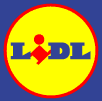 Buoyed by a sales growth of 8.8% Lidl reached a new record high market share of 3.9%, up from 3.6% last year. Its growth has been fuelled by a combination of more consumers visiting the stores and the average basket containing more items, demonstrating a consumer willingness to move their bigger shopping trips to the discounters.
Buoyed by a sales growth of 8.8% Lidl reached a new record high market share of 3.9%, up from 3.6% last year. Its growth has been fuelled by a combination of more consumers visiting the stores and the average basket containing more items, demonstrating a consumer willingness to move their bigger shopping trips to the discounters.
 Aldi grew sales by an impressive 15.7%, taking share to 5.4% of the market.
Aldi grew sales by an impressive 15.7%, taking share to 5.4% of the market.
As a result of sales growth of 1.6%, Waitrose has increased market share to 5.2%. This is helped by a regional bias towards southern Britain, where grocery sales are growing more quickly – particularly in London.
Iceland also returned to growth for the first time in a year this period, increasing sales by 1.9%.


